“My husband and I got married in October of 2014 and knew we wanted to start a family right away. We began our journey the same month and carried on trying naturally for about a year. Around 9 months into trying the thoughts of why hasn’t this happened yet and is there something wrong started to flood our minds, as it tends to do when couples are trying and it’s taking longer than expected.
It’s a natural reaction for any couple to have because it always seems to look so easy for everyone else when your social media feed is covered with pregnancy announcements. We knew going into this that it could take up to a year to happen for us, but with us being in our very early twenties, it was hard not to worry.
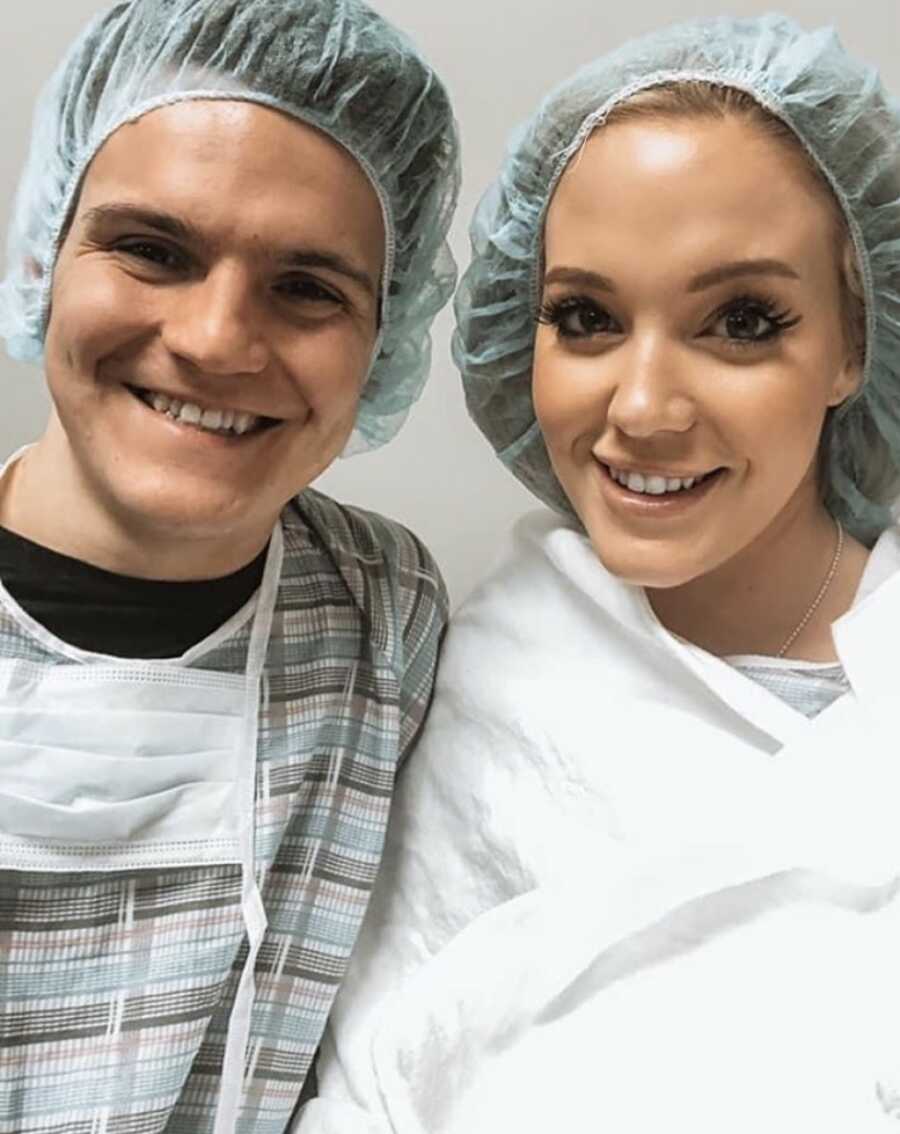
Around the 14-month mark of trying and not having even the slightest positive pregnancy test, we decided to go in for testing. One night, my husband sat me down and asked, ‘Would you love me no matter what?’ I couldn’t even begin to understand why he would ask that, because of course, I would. He took out an envelope of what looked like paperwork and began to explain that the results from his sperm analysis were not good. In fact, they were worse than we expected. As it turns out, my husband was diagnosed with male factor infertility (low sperm count, morphology, and motility).
I will say, it’s incredibly shocking to have an infertility diagnosis at such a young age, but at the same time, there was a great amount of relief that came with finally having a diagnosis that we could attempt to solve. He was immediately prescribed Clomid to see if it would help boost his count. After nearly 4 months, his count barely doubled, and because of his low starting count, his count after being doubled was still considered extremely low. We were basically told that our only hope of conceiving would be to try IVF/ICSI. With this information, we decided to keep trying naturally until we turned 25 because while his diagnosis wasn’t great, it still wasn’t impossible.
When our 25th birthday came and went, we decided to look into IVF and adoption. After looking into both options, it looked like IVF was the only financially obtainable option for us as we were lucky enough to have our insurance cover the majority of the costs. Once we met with our IVF doctor, he explained to us that because we don’t know the cause of my husband’s male factor infertility, we don’t know if it will get worse, so it’s best to start as soon as possible.
We did our first round of IVF in the fall of 2019, five years after beginning our journey of trying. I won’t lie, the emotions that come with IVF are some I was not prepared for. To start, it is incredibly scary to walk into your first round because you have no idea what to expect. Our first round of IVF went exceptionally well. They retrieved 23 eggs, 15 of those eggs fertilized with his sperm sample, and 9 of those made it to day 5 embryos. We transferred 2 embryos and were able to freeze the remaining 7. Our embryo transfer was, and will always be, a very special moment for the two of us as a couple.
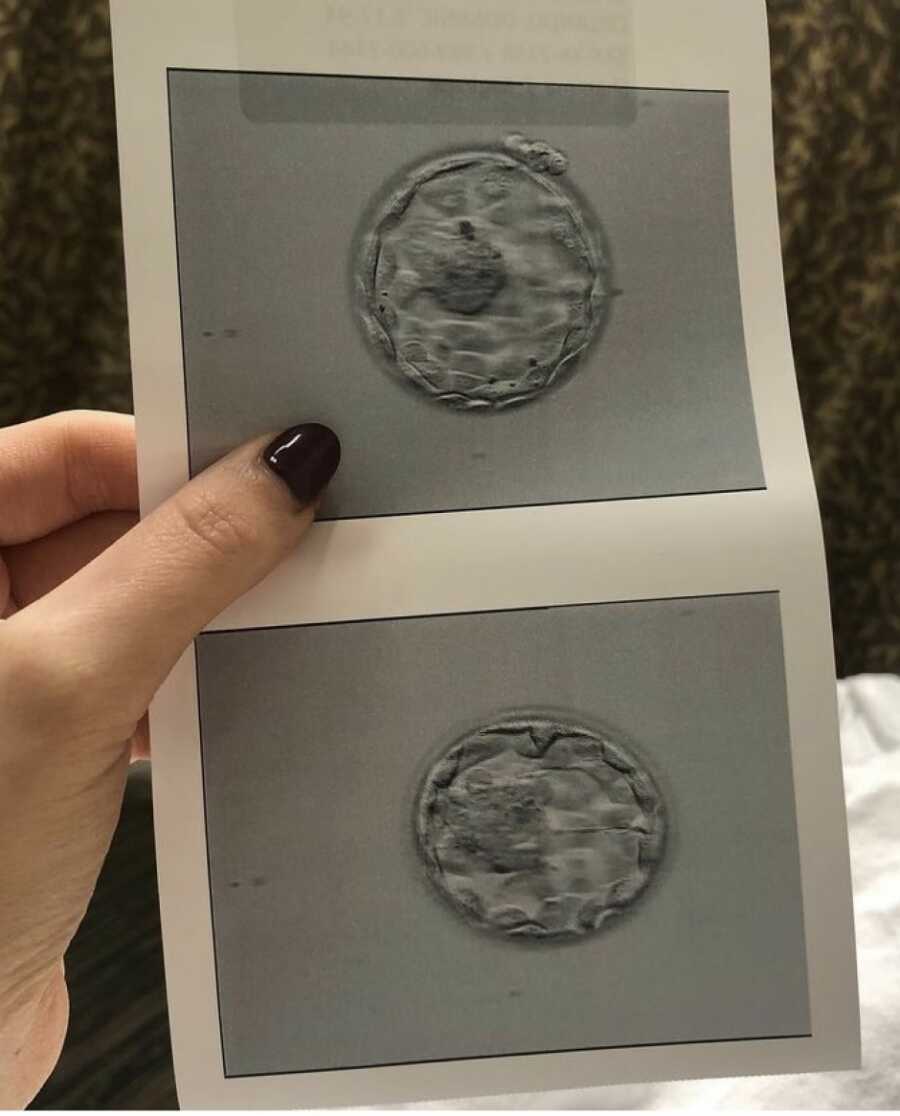
I would have never imagined a medical procedure could be so intimate, but it was truly a beautiful moment. The two-week wait is probably one of the hardest times you will ever go through after fertility treatments. Knowing that there are embryos inside of your uterus, but not sure what is going on or if they are implanting is probably one of the most stressful things to endure. It is so different than a normal two-week wait while trying to conceive naturally, because this time, you know that there is something you created in there. It’s just a waiting game to see whether or not they are able to stick.
Me being the very impatient person I am, I began testing almost every day of my two-week wait. Every test was stark white negative. The night before my HCG blood test was horrible. I was an emotional mess and knew I would get the news the next day that this round had not taken. It was confirmed the following afternoon that I was correct and we were not successful.
I did not know much about grief during this time. I had no idea that I was grieving after our first round failed. I found simple day-to-day tasks incredibly difficult, I found work hard, and I was full of emotions like sadness, anger, and numbness. Later on, I would come to realize this was grief. I was grieving the loss of what could have been and the embryos we had worked so hard for. It was during this time I decided to share my story for the first time on social media.
Only a handful of people knew about our struggle and something inside of me felt like it would feel really good to sit down and write out everything we’ve been going through over the last 5 years. Before posting, I asked my husband how he would feel if I were to share our journey. He didn’t even hesitate and told me to post. Within minutes, I was flooded with hundreds of comments, messages, calls, and texts from others either sharing their condolences or sharing their stories.
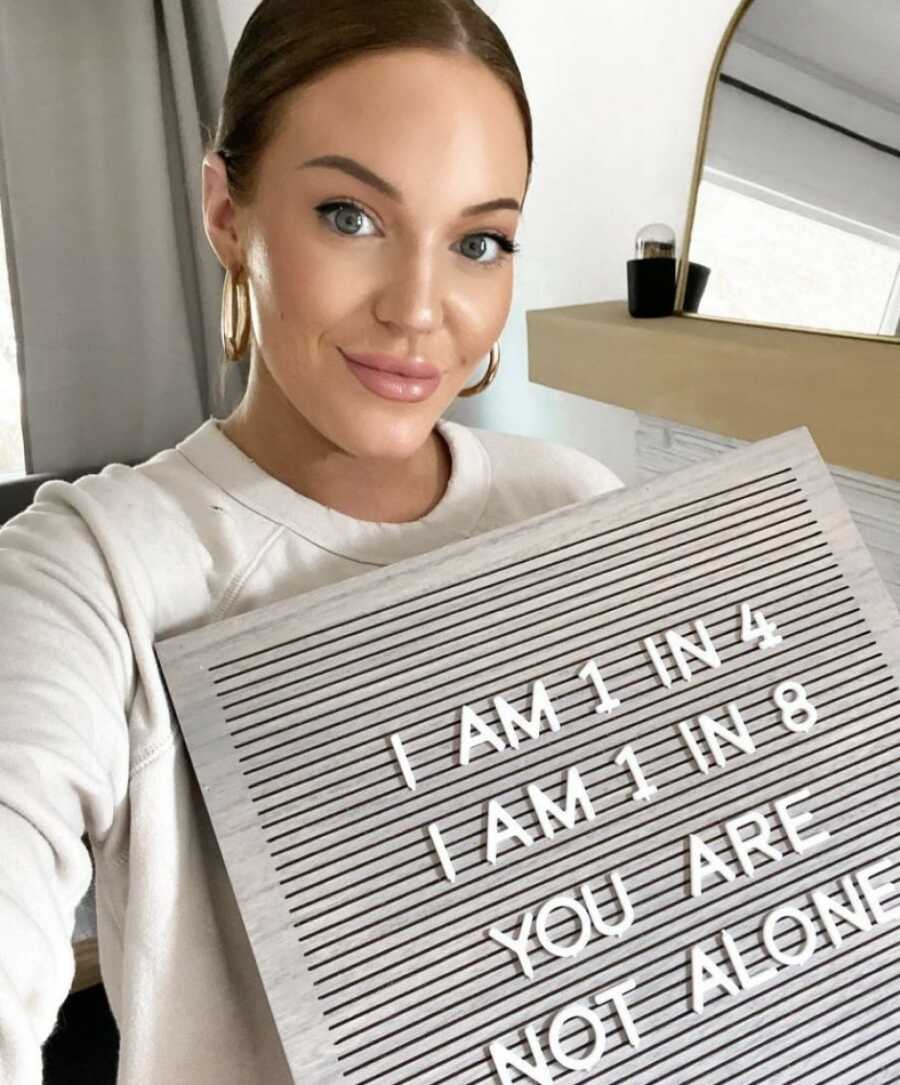
A weight had been lifted and it felt like we were finally able to live our truth. And most importantly, we felt less alone. Now I hadn’t mentioned this before, but during all of this, I had been vlogging our journey in hopes that one day I could share all of this footage as some sort of pregnancy announcement. But then I had an epiphany, what if I shared this footage as is? We often see a lot of happy endings when it comes to fertility journeys and pregnancy, so what if I shared my side of the story? The side where it didn’t work out for us, and the fact that we didn’t get our happy ending yet, and all of the raw emotional details that come with infertility. So, I posted that video as is and began getting more open and honest, sharing our journey as we go.
We went into our second round in January of 2020, and at this time I was openly sharing our story on social media. I felt an immense amount of support behind us this time and it made going into this round so much easier. In January I was set to do a routine hysteroscopy. A hysteroscopy is an exam of the inside of the uterus and cervix where they can go in and check if anything needs to be removed like fibroids, scar tissue, or polyps. They also get a biopsy of the uterine lining.
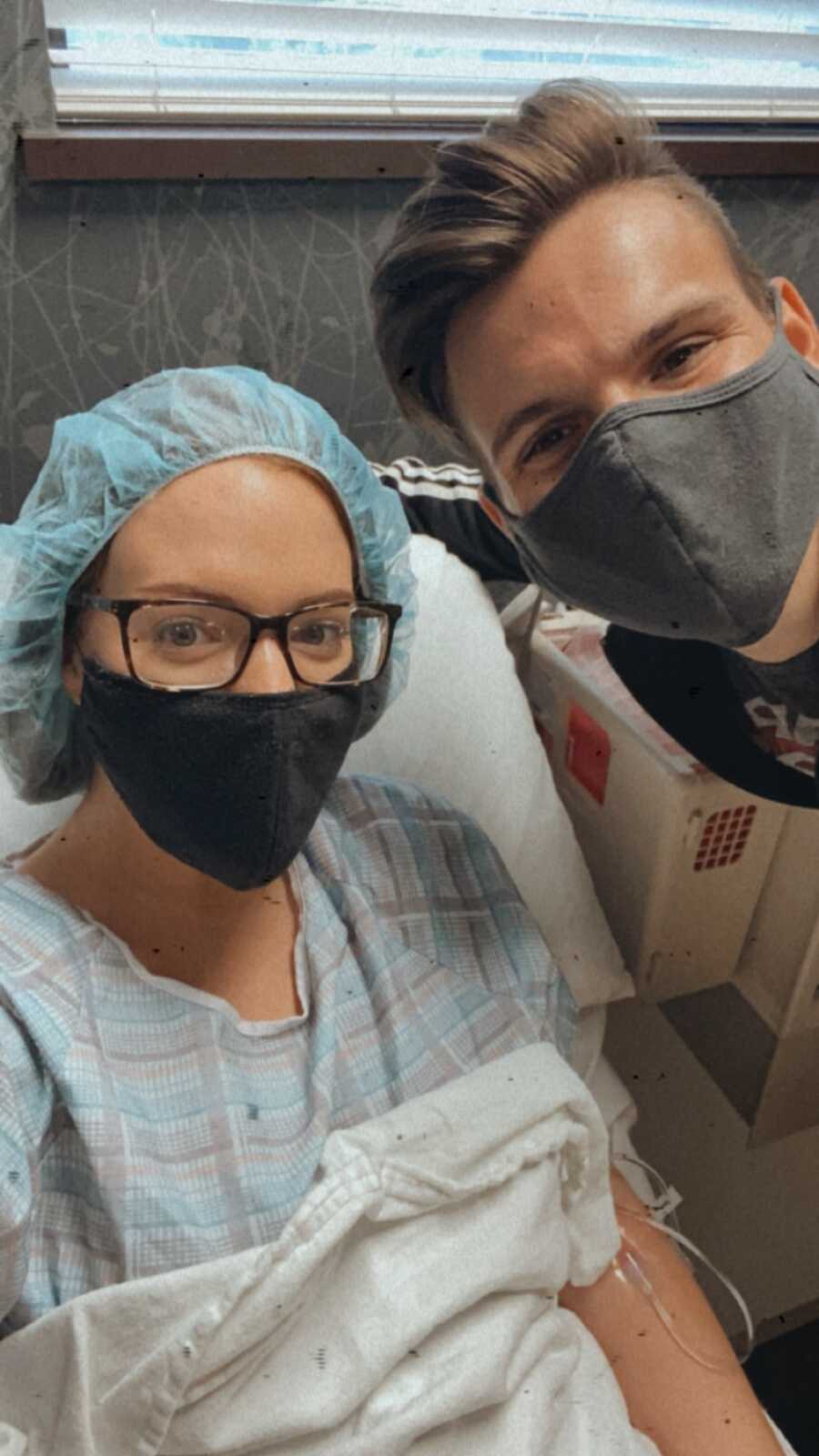
This helps ensure a smooth canvas for embryo transfer and the biopsy gives an idea of what might be going on with your lining in case of implantation failure and recurrent miscarriage. Unfortunately, my biopsy results didn’t come back so great. My doctor discovered I had Chronic Endometritis, which is inflammation of the uterine lining and has been linked to recurrent miscarriage and implantation failure. At the time, I didn’t know the severity of this, so I wasn’t too worried. I was prescribed a round of two antibiotics and scheduled to come in for another biopsy in two weeks.
Unfortunately, the following biopsy results were still showing chronic inflammation, so I was prescribed another round of antibiotics and scheduled for a biopsy two weeks later. Two weeks later, the results hadn’t changed. We were dumbfounded. After 6 weeks of back-to-back antibiotics and 3 hysteroscopies, while undergoing anesthesia, my doctor said this was all too much on my body and even though we couldn’t clear the inflammation, it was his advice to move forward with our embryo transfer in hope that it works.
In March of 2020, we moved forward with another double embryo transfer. While we weren’t sure if the inflammation was going to cause another implantation failure or not, we were incredibly excited to move forward and felt extremely hopeful. Something just felt different this time. It was just shy of a week past our embryo transfer that I started getting some hard to ignore pregnancy symptoms like spotting, cramping, and wild dreams!
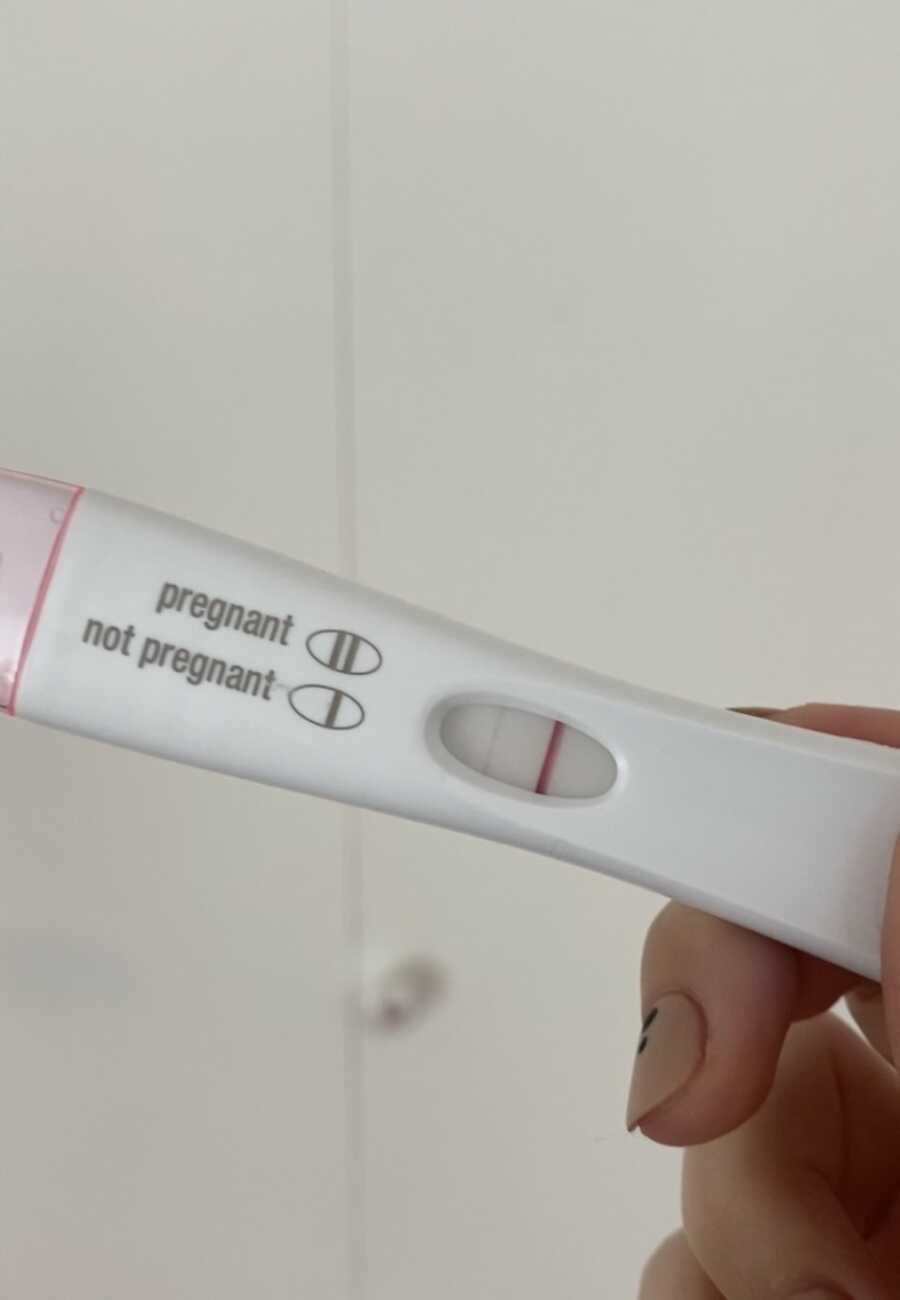
I decided to take a test early, and to our amazement, we were pregnant! In the almost 5 and a half years of trying, it finally felt like it was our time. Like all of this hard work was paying off. Pregnancy and parenthood felt achievable. We were so excited that we told our parents, siblings, and a couple of close friends that same day. For the first time ever, I was excited to take pregnancy tests to watch that pretty pink line get darker each day.
My mom sent us baby books and journals to keep track of our first pregnancy. We started listing out some names we liked. It felt so surreal. My first blood draw came back really good, and I was scheduled to be monitored every 48-72 hours with blood work to make sure my levels were doubling. The morning of my third blood draw, something didn’t feel right. I can’t explain what exactly I mean by that, but if you’ve ever been in my shoes, then you know what I mean. Waiting for the afternoon phone call from my nurse was torture, and to make matters worse, she hadn’t called around the normal time she usually did each day, which furthered my belief that something wasn’t right.
Around four in the afternoon that day, my nurse called with news that I would never wish on anyone. My levels had dropped by half, indicating I was going to miscarry. My husband was in the room with me expecting me to tell him the good news of how high my levels got that day, but instead, I hung up the phone and collapsed in on myself. Wailing. I felt as though the room was spinning and I was losing control. I couldn’t believe what I had just heard. I told my husband and he held me in his arms as I cried for hours.
Two days later, another blood draw confirmed our fears that we were losing our baby and I was told to stop all medication and wait for my body to miscarry naturally. The calls were made to our friends and family about our loss, the baby books were put away, and then we waited for the inevitable. I lost a part of who I was that day. Looking back, it felt like I was stuck in a dark hole for weeks on end. Then add being in a pandemic on top of that, where all you want to do is hug your mom but you can’t. The pandemic forced me to face my grief. I did not have the proper tools to grieve a loss like this.
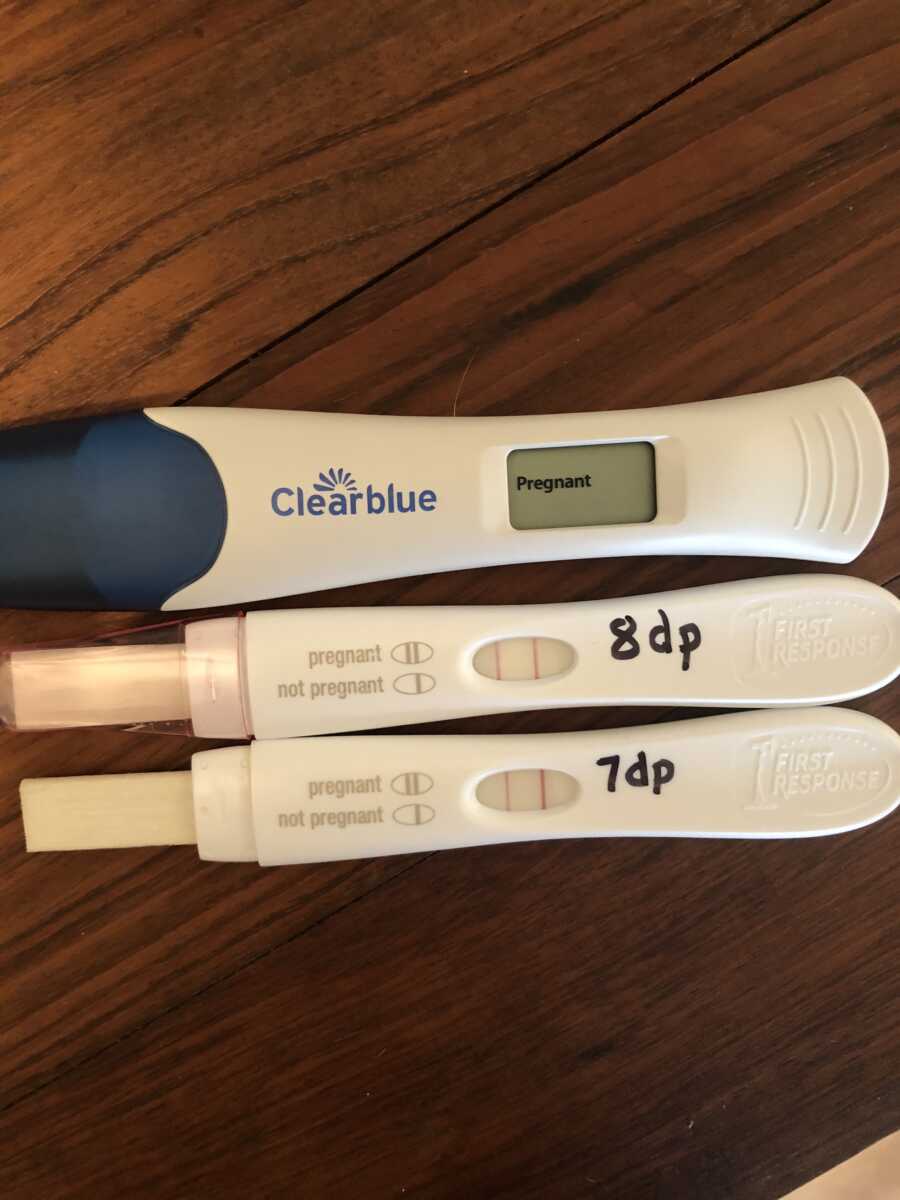
During my time of grief, I got the idea of starting a podcast to share what it was like to grieve after pregnancy loss and infertility. To maybe share tips on moving forward and hopefully in the future invite other women on who could share their stories as well. This is where my brand, Infertile Millennial, was born. My miscarriage literally birthed my brand which has now become a podcast where women and men come on to share their experiences with loss and infertility.
It’s become a growing support page on social media, a blog, a gift shop, and so much more. While starting this brand, I also began seeing a therapist to properly learn how to heal and process my grief. I’m proud to say that I am now one year into therapy and feel as though it was the best thing I have ever done for myself on our fertility journey. It has given me the tools to properly walk through the highs and lows of this journey and I highly recommend it to anyone struggling as I did. Most importantly, it gave me the strength back to get up and keep going on our journey.
After taking over a year off to heal, we decided to move forward with another embryo transfer. This time, my doctor had a new approach on how to try to cure the chronic inflammation in my uterus. We tried an IV infusion of one antibiotic and two oral antibiotics for two weeks twice a day. Having that many antibiotics in your system at once are not easy. There were definitely days where I didn’t feel my best, but it’s always in hopes that it will all be worth it.
Once finishing those antibiotics, I was scheduled for one more biopsy. Waiting for those results was hard. We knew this was our last resort for curing the inflammation, and we knew if it was still there, the odds that I would miscarry again or have the embryos fail to implant would weigh on our minds. About a week or so after my biopsy, my results were in. They cured it!
I broke down crying. It felt like we had a bigger shot at this next embryo transfer working. We were nothing but hopeful for this next transfer. On top of curing the inflammation, my doctor wanted us to try a natural embryo transfer, meaning I was going to use absolutely no hormones. Instead, we were going to time my ovulation and transfer the embryo 5 days after ovulation to trick my body into thinking it was created during that cycle.
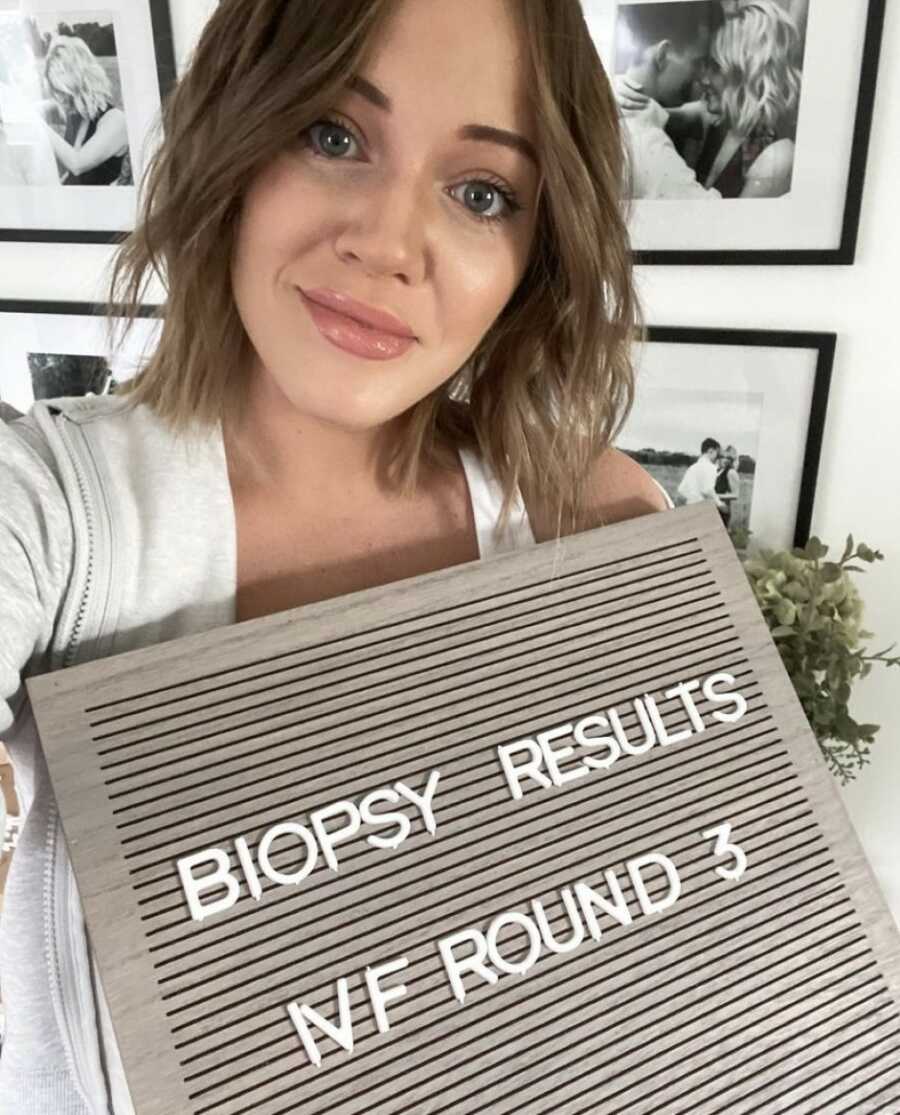
In August of 2021, we transferred two more embryos. This time, I was incredibly impatient when it came to testing. I started having similar symptoms to my last pregnancy, and at 6 days past my transfer, I had the faintest of faint pregnancy tests. Each day I would test, and though the tests were getting darker, they were still extremely faint. As someone who has experienced loss in the past, the excitement of positive pregnancy tests has forever been stolen from me. I don’t get to have the initial happiness other parents get to have, because a positive pregnancy test for us is only a small step in the right direction.
Positive pregnancy tests for us will always be met with ‘I hope I get to hear a heartbeat,’ or ‘I hope this one sticks.’ I’ll skip past the rollercoaster that was the next few days of faint tests and take you to the day before my blood draw. I woke up that morning with a darker pregnancy test, yet I had full-blown started my period. It was so heartbreaking, but also confusing. My first blood draw indicated that I was having an early loss, but as the days went on and my pregnancy tests kept getting darker and my blood work showed slow rising levels, it started to indicate that I was actually experiencing an ectopic pregnancy.
After a few weeks of blood work, countless pregnancy tests, a trip to the emergency room, and internal and external ultrasounds, my team decided that it would be in my best interest to terminate the pregnancy as ectopic pregnancies are not viable and can be life-threatening. No parents should ever have to be put in the position to terminate their pregnancy. Going into the office to have an injection of methotrexate is by far one of the hardest decisions my husband and I have ever had to make.
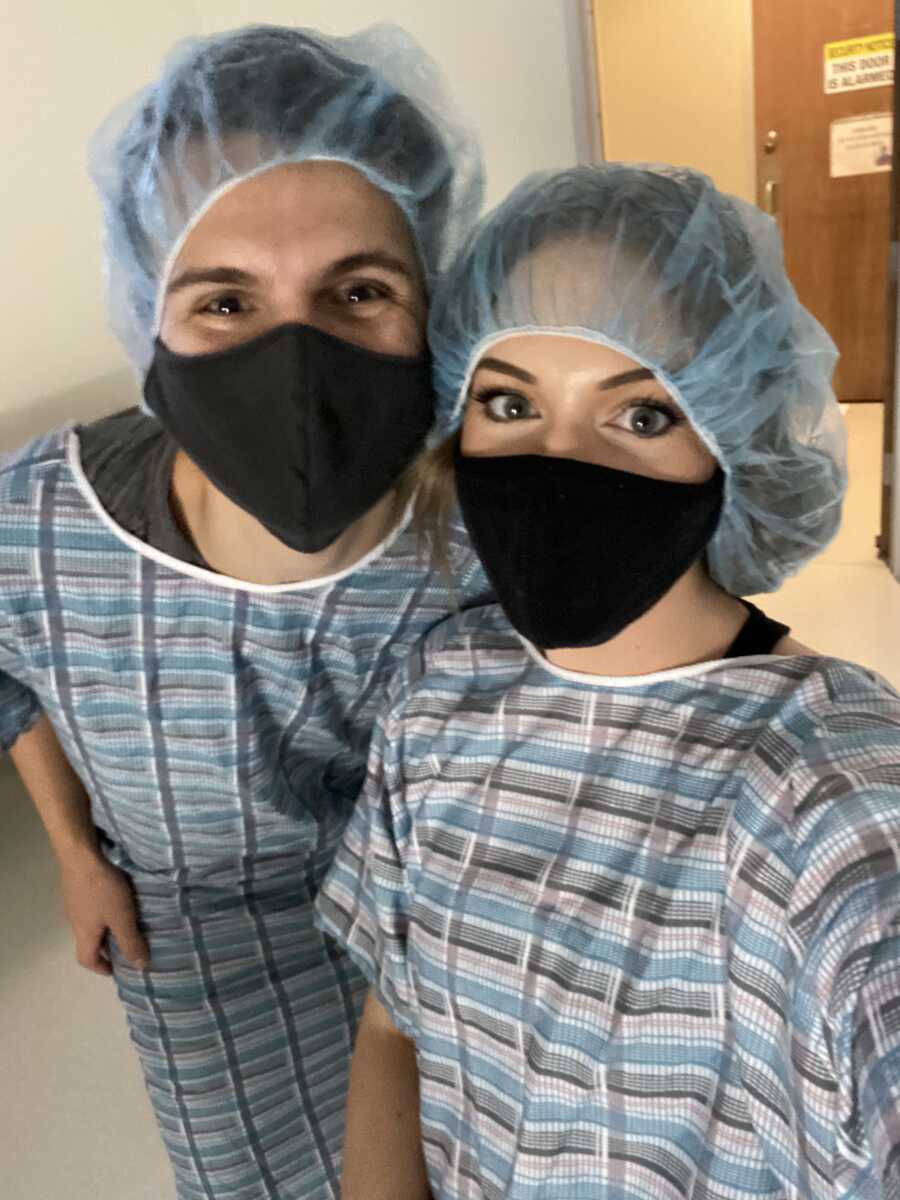
Due to getting this medication, we cannot move forward with fertility treatments for three months. We have a lot of decisions to make about our future of conceiving. While I would not have imagined that 7 years later, we would still be here without a baby, I am grateful for who I have grown to become and the lessons this journey has taught me.
I may not have physical stretch marks on my body from pregnancy, but my soul has stretch marks from the growth it has endured during this process. I am more patient, gracious, empathetic, compassionate, and understanding. For that I am thankful. The community I have found, the platform I have built, and the support I’ve been given are truly something I could not have had without this hardship. For anyone struggling with infertility or pregnancy loss, I hope that my story can show you that there can be grief and gratitude at the same time.”
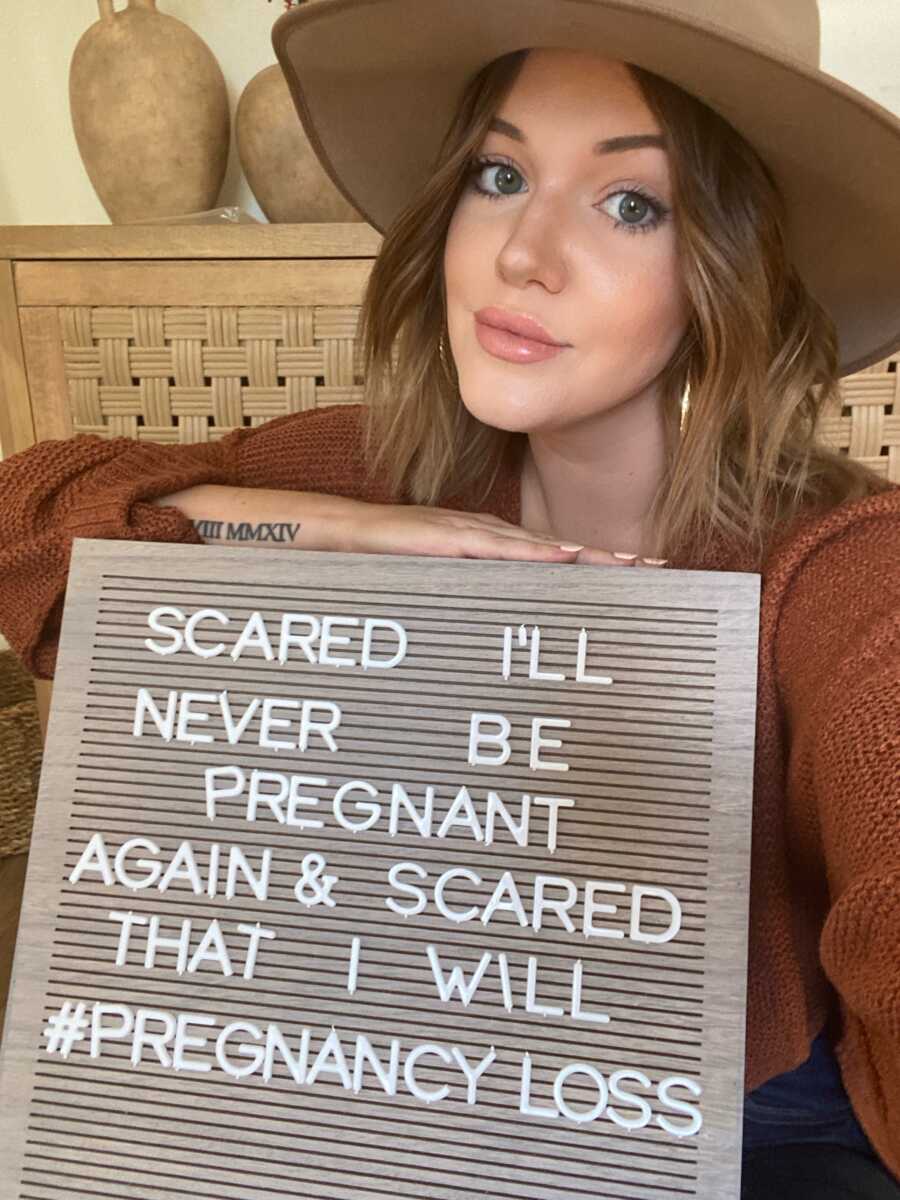
This story was submitted to Love What Matters by Emily Orlando from Michigan. You can follow her journey on her Instagram accounts, and her website. Submit your own story here, and be sure to subscribe to our free email newsletter for our best stories, and YouTube for our best videos.
Read more stories like this:
Provide hope for someone struggling. SHARE this story on Facebook to let others know a community of support is available.



